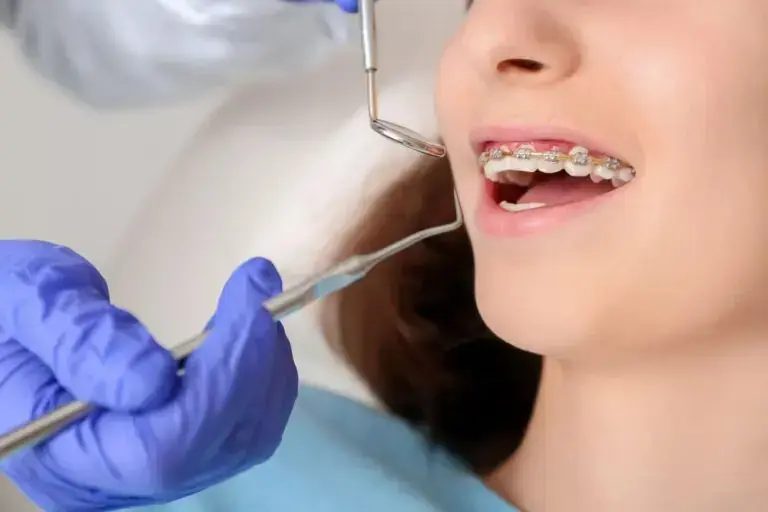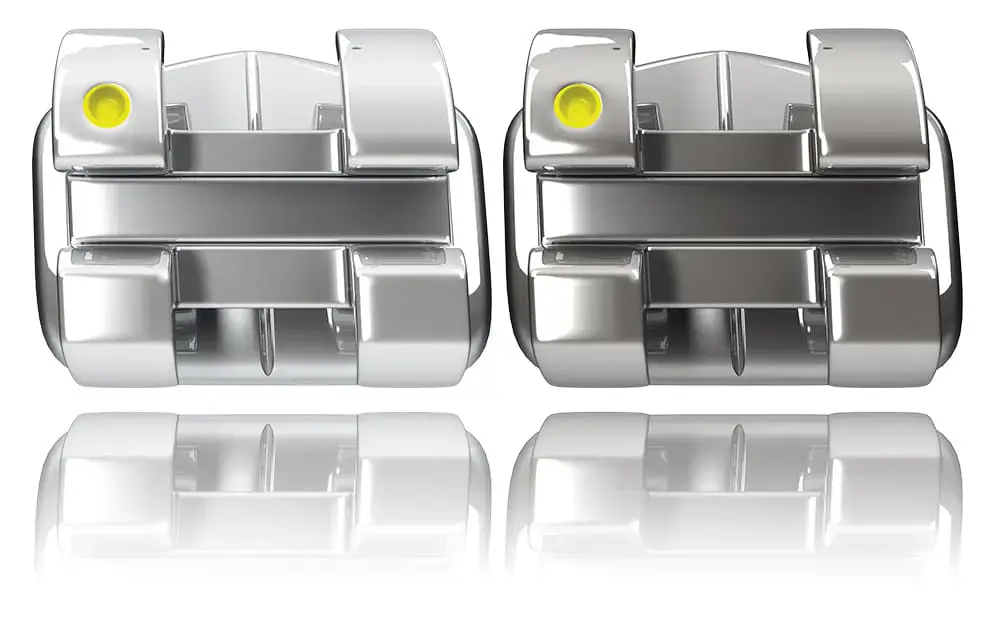Discover the Braces Austin TX Loves with Limestone Hills Orthodontics

What are Dental Braces?
Orthodontic treatment often involves the use of braces—a specialized appliance that traditionally employs brackets, bands, and wires to gradually reposition teeth. This method effectively addresses various dental concerns such as misalignment, overcrowding, gaps, bite irregularities (malocclusion), and overjet, overbite, or underbite.
We offer many types of braces in Austin, including traditional metal braces with noticeable brackets, clear braces made of ceramic designed to blend with the natural tooth color, and Invisalign invisible braces. There are also lingual braces that are discreetly attached to the back of the teeth.
The treatment duration typically ranges from one to three years, necessitating periodic adjustments by an orthodontist to tighten wires, replace elastics, and fine-tune brackets.
After braces removal, retainers are crucial for maintaining the newly aligned teeth.
Types of Braces

Metal Braces

Self-ligating Clear Ceramic Braces

Invisalign Invisible Braces
How are Braces in Austin Different with Limestone Hills Orthodontics?
Unlike other orthodontists, we do not offer the same traditional metal braces. We are one of the only practices in Austin to offer a free upgrade to Rhodium metal braces—which are beautiful, blend better with white teeth and look more like white gold than stainless steel! Our braces are made to pass meticulous Japanese standards, by GC Orthodontics.
We also offer self-ligating Japanese clear braces, which don’t stain because they don’t need elastic ligatures. Below you will see how Rhodium brackets (left) have the appearance of white gold and are not as gray as stainless steel brackets (right). We provide this upgrade free of cost for our braces in Austin, TX.

Instead of using the same measurements for braces on every patient and trying to eyeball the correct position, Dr. Viecilli, our orthodontic expert, customizes the bracket position based on your unique anatomy to ensure optimal results from the moment the brackets are placed.
We take pride in our unparalleled 20+ year honed expertise and commitment to ensuring our patients receive the highest standard of care. Our clinic stands out for its state-of-the-art facilities, Dr. Viecilli, a highly accomplished orthodontist, and personalized approach to treatment.
With over 20 years of honed expertise, we take pride in our commitment to ensuring our patients receive the highest standard of care. Our clinic stands out for its state-of-the-art facilities, the expertise of Dr. Viecilli—a highly accomplished orthodontist—and our personalized approach to treatment.
Our Rhodium metal braces and self-ligating clear ceramic braces are of premium Japanese quality, designed to deliver effective results in realigning teeth and improving oral health. We offer a comprehensive treatment plan that includes regular check-ups and adjustments to ensure optimal results.
Choosing our clinic for your braces treatment guarantees professional care, a comfortable environment, and an affordable pricing structure. We invite you to schedule a consultation with us to discuss your needs and begin your journey to a perfect smile. Below is a comparison of how traditional stainless steel metal braces look in the mouth (left) compared to our Rhodium braces (right):

Our self-ligating clear ceramic braces look like this:

Some of Our Braces Reviews in Austin, TX
Our Unique Advanced Technology Treatment Process for Austin Braces
The treatment process commences with an initial consultation where the patient’s medical history is examined, symptoms are discussed, and necessary physical examinations are conducted. We are one of the few orthodontic offices to use state of the art 3D Cone Beam CT scans in Austin, and perform full 3D evaluation of the position of the teeth, jaw alignment and airway. This is crucial to developing a tailored treatment plan that suits the patient’s specific needs. Following this, advanced technology and techniques are employed to execute the treatment.
Our technology and techniques are state-of-the-art, ensuring a high standard of care and precision in treatment. Before a single brace is placed on your tooth, Dr. Viecilli uses 3D technology to plan exactly how your smile and bite should be to achieve optimal results. No one builds a house without detailed plans; Dr. Viecilli believes each of his patients deserves the same level of detail, streamlined process, and optimal results.
The average duration of the treatment can vary widely based on the individual’s condition and the complexity of the treatment plan. However, when Dr. Viecilli makes a digital plan and uses premium braces, your treatment time can be significantly reduced compared to traditional braces. The treatment concludes with placement of removable and/or bonded/fixed retainers and delivery of removable retainers.
Benefits of Braces in Austin, TX
Traditional braces play a significant role in enhancing oral health by correcting various dental issues such as crooked teeth, overbites, underbites, incorrect jaw position, and disorders of the jaw joints. Besides ensuring proper teeth alignment, braces also contribute to healthier gums, improved oral hygiene, prevention of tooth decay, gum diseases, and tooth loss. They help in the even distribution of biting pressure across all teeth, thus preventing tooth breakdown.
From an aesthetic perspective, traditional braces contribute to a more attractive smile, better facial balance, and improved self-esteem. Numerous testimonials from past patients substantiate these benefits. They frequently report enhanced confidence in their smiles, easier maintenance of oral hygiene, and an overall improvement in oral health after using traditional braces.
Cost and Financing of Braces in Austin, Texas with Limestone Hills Orthodontics
Click the link to know more about the cost of custom traditional braces which typically ranges from $1,700 to $6,500 here in Austin. This includes a no commitment initial free consultation, no charges for orthodontic records like X-rays and photos, the braces installation fee, monthly visits for adjustments, and a final retainer to maintain the teeth’s position after the braces are removed.
Get your Braces in Austin in our Conveniently Located Orthodontic Practice!
Located near local landmarks such as Pennybacker Bridge (360 Bridge), Mount Bonnell, Lake Travis and Lake Austin, our office is Our office is conveniently located on Ranch Road 2222, just a short drive from Loop 360 and Mopac Expressway (TX-1 Loop).
We are minutes away from: The Domain, Bull Creek District Park and The Arboretum at Great Hills. Easily accessible and conveniently situated for residents throughout Austin’s Hill Country. Only 20 mins Northwest of Downtown Austin and 15 mins Southeast of Steiner Ranch and Cedar Park.
Our practice proudly serves top Communities of North and Northwest Austin, seeing patients from Cat Mountain, Great Hills, Jester Estates, River Place, Steiner Ranch, Cedar Park, Anderson Mill, Four Points and Westlake Hills. We also see patients from Lakeway (we are conveniently located on the drive to Austin from Lakeway) Round Rock, Pflugerville and even Leander!
Schedule Free Orthodontic Consultation for Braces Today!
Ready to transform your smile with the braces Austin TX trusts? Schedule a Free Orthodontic Consultation today or contact us with any questions.

